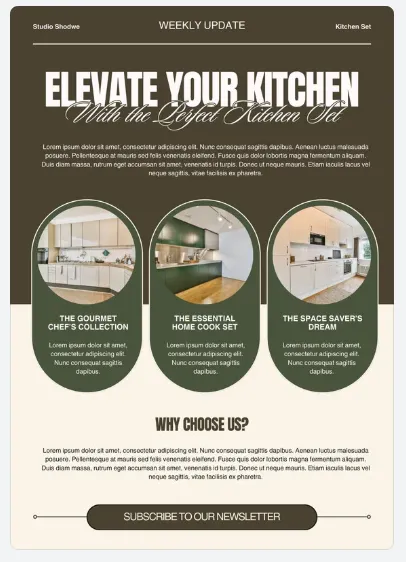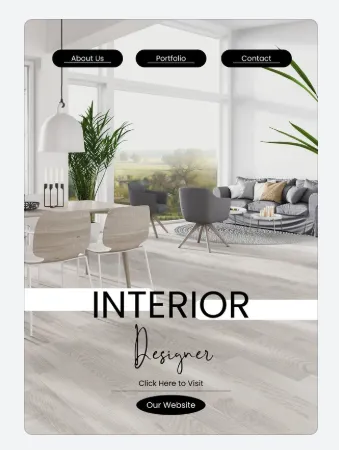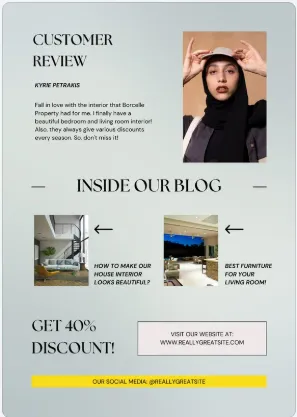
In the competitive construction industry, acquiring new customers is only half the battle. The real challenge—and opportunity—lies in converting leads into loyal clients and generating repeat business. Email marketing remains one of the most effective, affordable, and direct ways for contractors to nurture relationships and stay top-of-mind with potential and existing customers.
With email marketing delivering an average return of $36 for every $1 spent (according to Litmus), contractors who aren't leveraging this powerful tool are leaving money on the table. This article explores how construction businesses can implement effective email marketing strategies to convert prospects, retain clients, and ultimately grow their bottom line.
Despite the rise of social media and other digital marketing channels, email continues to deliver impressive results for several reasons:

Before you can start sending emails, you need a healthy list of contacts. Here are effective strategies for building a quality email list:
Your website should include multiple opportunities for visitors to join your email list:
A roofing company in Colorado increased their email list by 27% in six months by adding a "Free Roof Inspection" offer as an email opt-in on their homepage.
The construction industry provides numerous opportunities for in-person email collection:
One commercial construction firm implements this strategy effectively by having their project managers collect client emails during initial consultations, specifically asking how often clients would like to receive project updates.
Offer valuable resources in exchange for email addresses:
A kitchen remodeling business attracted over 300 new email subscribers in one month by offering a comprehensive "Kitchen Remodel Planning Guide" that included a budgeting worksheet and timeline planner.
Not all contacts on your list have the same needs or interests. Segmentation allows you to send targeted content to different groups:

Separate your list based on the types of projects clients are interested in:
Group contacts based on where they are in the customer journey:
Consider grouping leads and clients by the scale of projects they're interested in:
A mid-sized construction company uses segmentation to deliver targeted content to commercial and residential clients separately. Their commercial clients receive emails about office renovations and industrial projects, while residential clients get content about home remodeling trends and maintenance tips.
With your list built and segmented, it's time to create email campaigns that nurture leads and generate business. Here are the must-have email sequences for construction businesses:

First impressions matter. A welcome sequence introduces new subscribers to your business:
For prospects who have shown interest but aren't ready to commit:
After sending a quote or estimate:

For current clients:
After project completion:
For past clients:

According to a survey by the Associated General Contractors of America, contractors who implement systematic post-project follow-up experience a 40% increase in referrals on average. One home builder saw a 43% increase in referrals after implementing a thank-you email with professional photos of the completed project, followed by a request for a review and a referral incentive offering a discount on future services for both the past client and their referral.
The content and design of your emails play a crucial role in their effectiveness:
Construction-specific subject lines that drive high open rates:
Focus on content that demonstrates your expertise and addresses client needs:
Construction is a visual business—leverage this in your emails:
Industry data from the Construction Marketing Association shows that emails with visual content achieve 65% higher engagement rates than text-only messages. A residential remodeling company consistently achieves open rates above 35% by using subject lines that incorporate the specific neighborhood or project type their recipient is interested in, such as "North Hills Kitchen Trends: What Your Neighbors Are Choosing in 2025."

Finding the right balance in email frequency is crucial:
Research by the National Association of Home Builders found that Tuesday and Thursday mornings typically yield the highest open rates for construction-related emails, with 9-10 AM being the optimal sending time.
The key to long-term email marketing success is measuring performance and continuously improving:
Regularly test different elements to optimize performance:
A regional construction firm improved their email conversion rates by 17% after A/B testing revealed that emails with video content received significantly higher engagement than those with static images alone.
Most contractors don't have time to manually send individual emails. Automation solves this problem:
Set up automatic emails based on specific actions:
Several platforms offer features specifically beneficial for contractors:
According to a 2023 Construction Management Association of America study, contractors using automated email sequences for quote follow-ups see a 22% higher conversion rate compared to those who follow up manually or inconsistently.
Ensure your email marketing adheres to legal requirements and industry best practices:
For construction businesses, email marketing represents far more than a promotional channel—it's a relationship-building tool that helps convert one-time clients into lifelong customers and advocates for your business.
By implementing strategic email campaigns, personalizing your communication, leveraging automation, and consistently delivering value to your subscribers, you can create a sustainable marketing system that generates leads and nurtures them throughout the customer lifecycle.
The most successful contractors don't view email marketing as a one-time campaign but as an ongoing conversation with their community of clients, prospects, and partners. With each valuable email sent, you're not just promoting your services—you're building trust, demonstrating expertise, and laying the foundation for long-term business success, one inbox at a time.